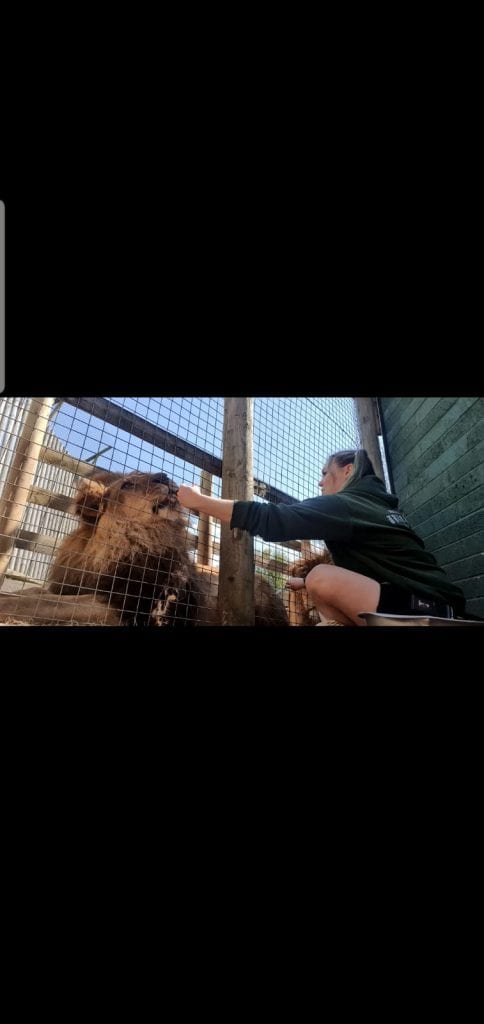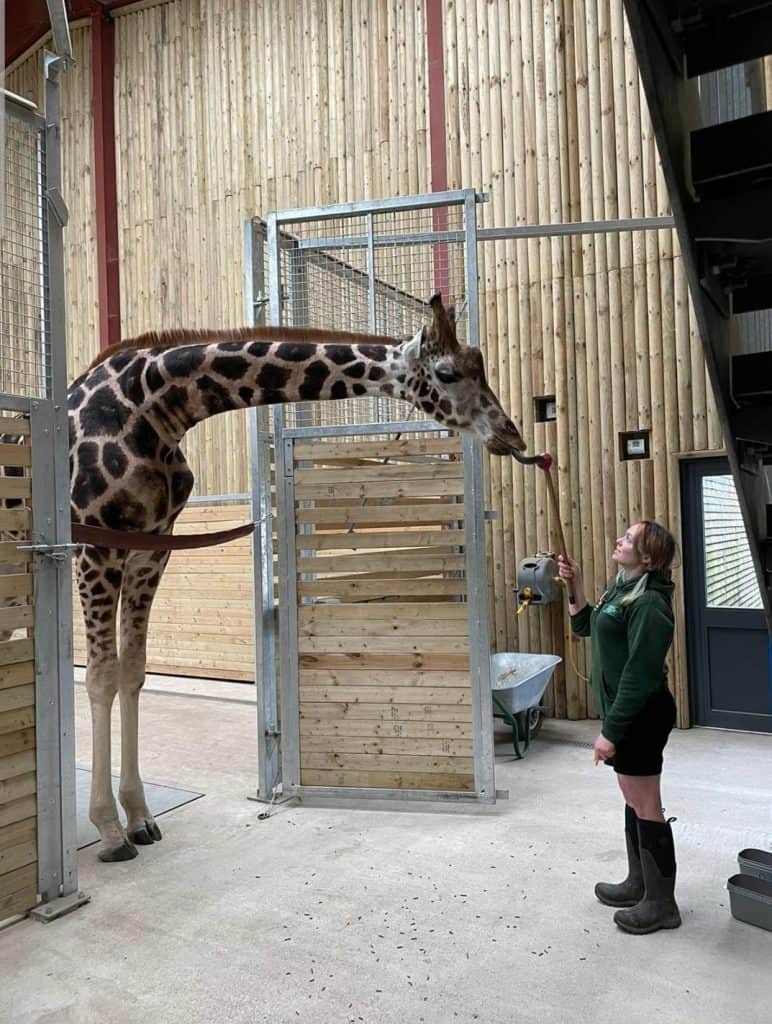As this is my first blog I thought I’d introduce myself and my new role here at Wingham Wildlife Park, having come over from SWP due the sad closure of the site recently. Although, it is not all sad as my new role of Head of Animal Training brings exiting new challenges, many exciting new species to work with and a lot of goals to work through.
Training with animals is so important for many reasons and the animals benefit greatly from learning to cooperate for medical procedures, weighing, crating, and basic daily husbandry.
Crate training
For example, I recently trained Nancy the porcupine to voluntarily enter a crate preparing her for the move from SWP to WWP. Being a very spiky lady they can be difficult to move. It is much easier for us and less stressful for her to do it this way. Building up a positive relationship with crates is helpful to use across a broad spectrum of animals and can also be used in conjunction with weighing. If they are comfortable to be inside the crate, the crate can easily be placed on scales for easy, stress-free regular weighing.
Medical training
Another example is training the cats for hand vaccination. All the cats are vaccinated yearly, so I aim to get all of them to a point where they will voluntarily present their side to the mesh in order for me to vaccinate them, this means they will not have to be darted in the house, which can be a very stressful experience for them.

Animals receiving a hand injection from someone they know and trust has also shown to vastly reduce the time it takes for drugs to take effect such as anaesthetic, as they are much calmer. When an animal is stressed it can take the anaesthetic a much longer time to take effect. Studies have shown this to be true across a vast variety of species.
Training can also have other benefits such as increasing the activity of an animal and keeping them occupied. Sometimes animals can present stereotypic/negative repetitive behaviour/ over-grooming if they are not stimulated enough. Training gives the animal something to focus on and move around for, reducing these behaviours.
A lot of species also willingly participate without the use of food reinforcement. Showing that they enjoy the sessions and find them an enriching experience. This is both beneficial for the animal as they enjoy it and for the trainer to strengthen the relationship they have with that animal.
There are many more examples of cooperative medical training that I will be using with our animals here, including giraffe hoof care. You may see Head of mammals Matt and myself doing some training with the giraffes. This is to get them used to presenting the foot and allowing us to check their hooves. For giraffe, hoof health is vital as they continue to grow throughout their life so ongoing hoof maintenance can prevent any issues associated with overgrowth. As this needs to be done regularly the best way forward is training them to cooperate and create a routine in a stress-free environment.

I look forward to sharing my training journey with you all through my blogs!


